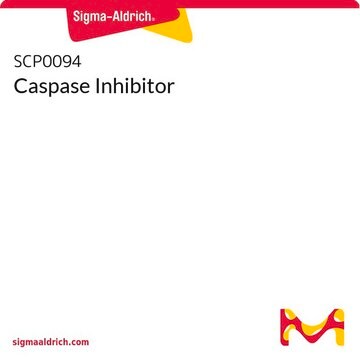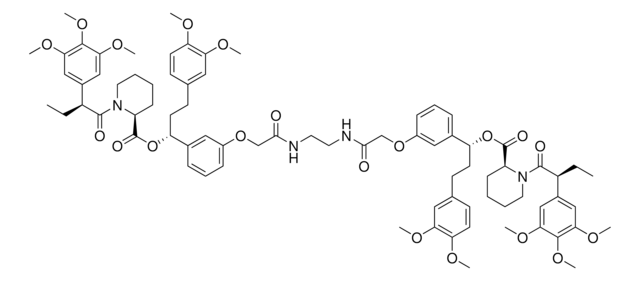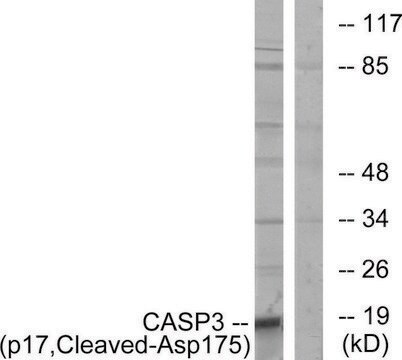539741
PTP1B Inhibitor
PTP1B Inhibitor, CAS 765317-72-4, is a cell-permeable, selective, reversible and non-competitive allosteric inhibitor of PTP1B (IC₅₀ = 4 µM and 8 µM for PTP1B403 and PTP1B298, respectively).
Synonyme(s) :
PTP1B Inhibitor, 3-(3,5-Dibromo-4-hydroxy-benzoyl)-2-ethyl-benzofuran-6-sulfonicacid-(4-(thiazol-2-ylsulfamyl)-phenyl)-amide, PTP Inhibitor XXII
About This Item
Produits recommandés
Niveau de qualité
Pureté
≥95% (HPLC)
Forme
solid
Fabricant/nom de marque
Calbiochem®
Conditions de stockage
OK to freeze
protect from light
Couleur
white
Solubilité
DMSO: 100 mg/mL
ethanol: 5 mg/mL
Conditions d'expédition
wet ice
Température de stockage
−20°C
InChI
1S/C26H19Br2N3O7S3/c1-2-21-23(24(32)14-11-19(27)25(33)20(28)12-14)18-8-7-17(13-22(18)38-21)41(36,37)30-15-3-5-16(6-4-15)40(34,35)31-26-29-9-10-39-26/h3-13,30,33H,2H2,1H3,(H,29,31)
Clé InChI
SXKBTDJJEQQEGE-UHFFFAOYSA-N
Description générale
Actions biochimiques/physiologiques
PTP1B403
Conditionnement
Avertissement
Reconstitution
Autres remarques
Informations légales
Code de la classe de stockage
11 - Combustible Solids
Classe de danger pour l'eau (WGK)
WGK 2
Point d'éclair (°F)
Not applicable
Point d'éclair (°C)
Not applicable
Certificats d'analyse (COA)
Recherchez un Certificats d'analyse (COA) en saisissant le numéro de lot du produit. Les numéros de lot figurent sur l'étiquette du produit après les mots "Lot" ou "Batch".
Déjà en possession de ce produit ?
Retrouvez la documentation relative aux produits que vous avez récemment achetés dans la Bibliothèque de documents.
Notre équipe de scientifiques dispose d'une expérience dans tous les secteurs de la recherche, notamment en sciences de la vie, science des matériaux, synthèse chimique, chromatographie, analyse et dans de nombreux autres domaines..
Contacter notre Service technique







